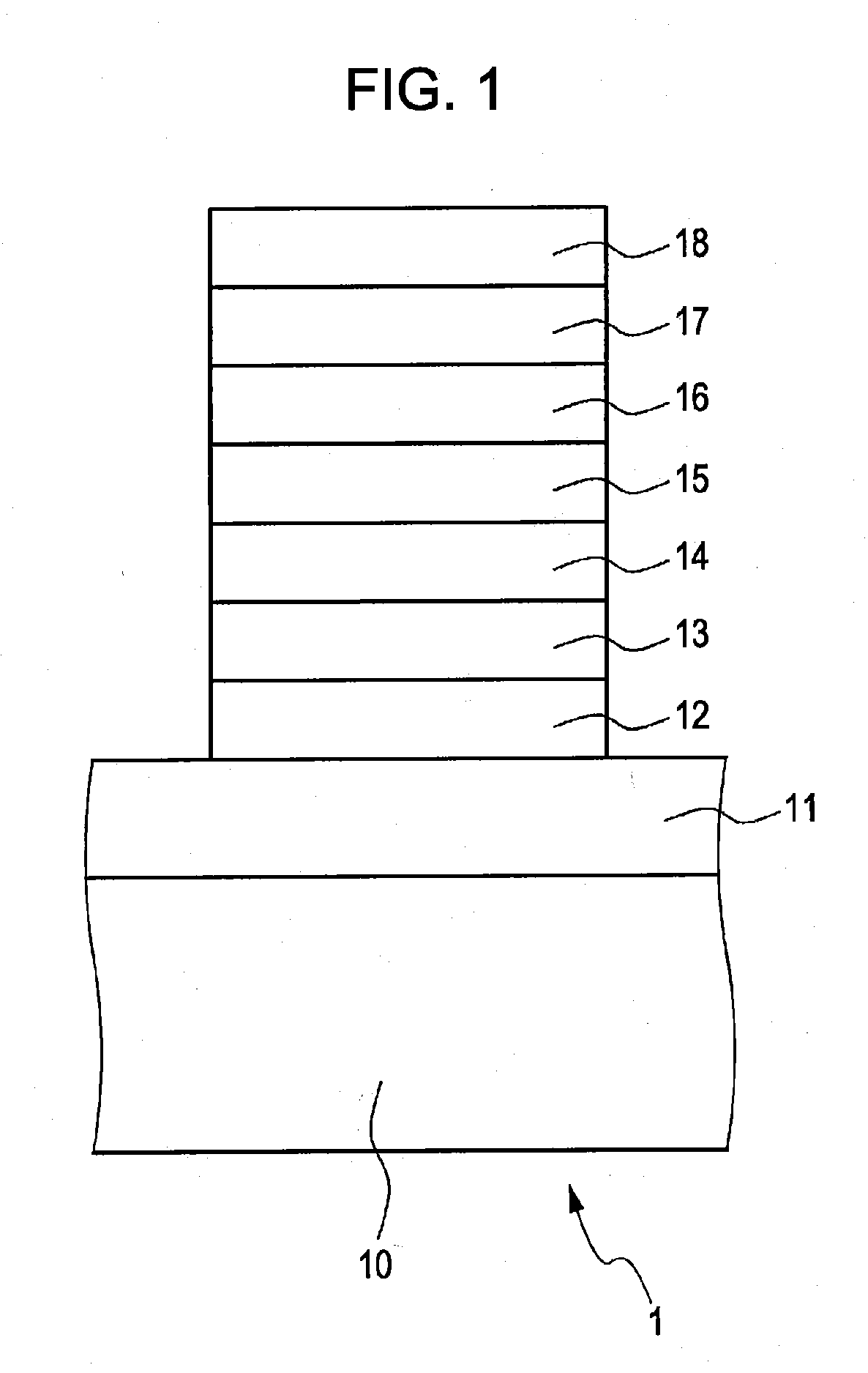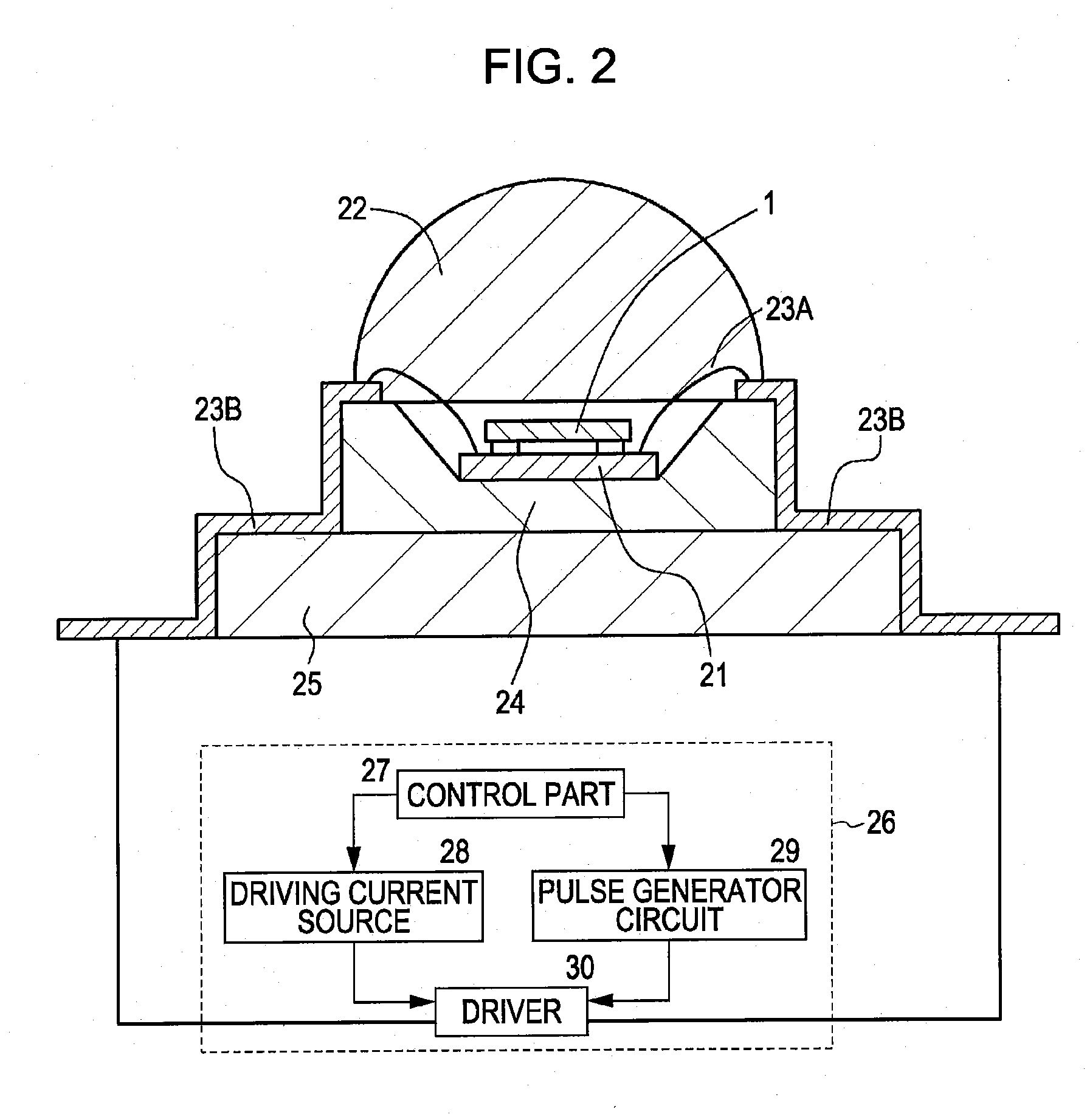Gan-Based Semiconductor Light-Emitting Device, Light Illuminator, Image Display Planar Light Source Device, and Liquid Crystal Display Assembly
a semiconductor and light-emitting technology, applied in semiconductor lasers, instruments, optics, etc., can solve the problems of narrowing or changing the color space, shifting the emission wavelength, and narrowing the color space after control, so as to reduce the emission wavelength shift, improve the luminous efficiency, and increase the operating current density
- Summary
- Abstract
- Description
- Claims
- Application Information
AI Technical Summary
Benefits of technology
Problems solved by technology
Method used
Image
Examples
example 1
EQUIVALENT
[0231]d2=(WL2 / WL) / (t2 / t0)=(8 / 10) / (50 / 150)=2.40d1=(WL1 / WL) / (t1 / t0)=(2 / 10) / (100 / 150)=0.30
example 2
[0248] Example 2 is a modification of Example 1. In a GaN-based semiconductor light-emitting device of Example 2, an underlying layer containing In atoms is formed between the first GaN-based compound semiconductor layer 13 and the active layer 15 (more specifically, the first GaN-based compound semiconductor layer 13 and the undoped GaN layer 14 in Example 2). In addition, a superlattice layer containing a p-type dopant is formed between the active layer 15 and the second GaN-based compound semiconductor layer 17 (more specifically, the undoped GaN layer 16 and the second GaN-based compound semiconductor layer 17 in Example 2). In this structure, a more stable operation of the GaN-based semiconductor light-emitting device can be achieved at a high operating current density while further improving the luminous efficiency and further decreasing the operating voltage.
[0249] The underlying layer is a Si-doped InGaN layer having an In composition ratio of 0.03 and a thickness of 150 nm...
example 3
[0253]d2=(WL2 / WL) / (t2 / t0)={(5+2 / 9) / 10} / {(40+2 / 3) / 122}=1.57d1=(WL1 / WL) / (t1 / t0)={(4+7 / 9) / 10} / {(81+1 / 3) / 122}=0.72
[0254] For comparison, a GaN-based semiconductor light-emitting device including an active layer shown as Comparative Example 3 in Table 3 was produced. The well layer density d1 and the well layer density d2 in Comparative Example 3 are determined from the equations (1-1) and (1-2) as follows:
PUM
| Property | Measurement | Unit |
|---|---|---|
| operating current density | aaaaa | aaaaa |
| operating current density | aaaaa | aaaaa |
| thickness | aaaaa | aaaaa |
Abstract
Description
Claims
Application Information
 Login to View More
Login to View More - R&D
- Intellectual Property
- Life Sciences
- Materials
- Tech Scout
- Unparalleled Data Quality
- Higher Quality Content
- 60% Fewer Hallucinations
Browse by: Latest US Patents, China's latest patents, Technical Efficacy Thesaurus, Application Domain, Technology Topic, Popular Technical Reports.
© 2025 PatSnap. All rights reserved.Legal|Privacy policy|Modern Slavery Act Transparency Statement|Sitemap|About US| Contact US: help@patsnap.com



